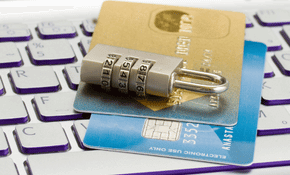About 30,000 people came together to buy a single NFT. Pak's "Combination" sold for a very high price, like $91.8M, making it the most expensive NFT work. Between June 2021 and June 2022 alone, It is sales reached $29 billion. So what is the NFT where pictures of monkeys sell for tens of millions of dollars?
| Content Table |
| What is NFT? |
| Why is It Important? |
| How Does It Work? |
| Where Are They Used? |
| Why Do People Pay This Much? |
| What is the Difference Between NFTs and Cryptocurrency? |
NFT Meaning
Non-fungible tokens. NFT is a single token encrypted on the blockchain network. It is a digital asset that links ownership to unique items such as artwork, real estate, music, or videos.
What is NFT?
It is a volatile coin like Bitcoin, but NFTs cannot be exchanged. The most important feature of it is that it is a unique and proprietary entity. Tokens differ from regular coins in that they are produced with different values and uniqueness that are not interchangeable. An NFT's data can be linked to digital images, songs, videos, and more. Additionally, they can be used to provide its owner access to exclusive products, live or digital event tickets, or to be linked to physical assets such as cars.
Most of them are part of the Ethereum blockchain, which is a currency like bitcoin and dogecoin. What makes an NFT unique is that it is tied to the token. They have metadata processed through a cryptographic hash function, an algorithm that computes a unique string of letters and numbers. They are also used to create the possibility of asset interoperability across multiple platforms.
Why is It Important?
It is, in a sense, the evolution of cryptocurrency. Modern financial systems consist of advanced trading and credit systems for different asset types. It's also prominent in reinventing this infrastructure by creating digital representations of physical assets.
The most apparent benefit of it is known as market efficiency. When a physical asset is converted to digital, processes are streamlined, and intermediaries are eliminated. In addition, it can also contribute to improving business processes. It makes it easy for different actors in the supply chain to interact with it and helps to keep track of its origin, production, and sales throughout the entire process.
It is also great for identity management. For example, when individual passports are converted to NFTs, each with unique identifying characteristics, the entry and exit processes into and out of the zones will be easier.

How Does It Work?
Creating and selling NFT consists of a fairly simple process. Here's how it work:
- A unique asset is selected to be sold as an NFT.
- The object is added to a blockchain that supports them through a process called minting.
- This element on the blockchain is now represented by NFT and confirms proof of ownership in an immutable record.
- The NFT created can be kept as a unique collection piece, sold and purchased at auctions or NFT marketplaces.

Where Are They Used?
Non-Fungible Tokens are often used in collections and areas that require digital ownership. Crypto can be found in artworks, digital collectibles, and digital items in online games. It can be items such as a work of art, stamp, basketball card, or Lebron James dunk.
It can be anything that exists in digital, even tweets. For example, Twitter founder Jack Dorsey's first tweet was sold as NFT for $2.9 million. He was paid $580,000 for each word in his tweet just "just setting up my Twitter." Dorsey announced that its income would be converted into Bitcoin and donated to the charity, GiveDirectly, providing COVID-19 aid to six African countries.
Kings of Leon sold NFTs of their latest album and made over $2 million. Last February, the Lebron James match NFT card on the NBA Top Shot platform was sold for $208,000. In the same month, Axie Infinity, a digital land title in the video game, was sold for $1.5 million.

Why Do People Pay This Much?
The NFT market, which has existed since 2014 and is growing in popularity daily, was valued at $41 billion in 2021, roughly equivalent to the combined value of the entire global fine art market. The NFT painting "EVERYDAYS: The First 5000 Days" by the famous digital artist known as Beeple sold for $69.3 million and is one of the most famous works known. So why spend millions on something anyone can view, screenshot, or download online for free? The answer is simple: It grants the buyer to own the original item and includes built-in authentication that serves as proof of ownership. Collectors who spend millions also value these digital rights more than the product itself.
Think of artworks like The Starry Night. Investments are also made in these works of art, such as precious metals, company shares, and cryptocurrencies because unique products can maintain their value for decades or even centuries. Art, in essence, is an investment tool for aesthetic pleasures and providing prestige. The same conditions apply to the digital version of this.
Some questions arise in terms of the uniqueness of these digital items. This is where the difference in NFTs becomes important. Blockchain technology is the factor that adds value to digital products from rarity. Thanks to the blockchain's unique cryptography features, it offers its owners absolute ownership of the product. In other words, the product you buy is a "real digital copy," and nobody can claim otherwise with a downloaded copy of it.
Besides, as another example, gold, diamonds, or US dollars actually have no value. The dollar is a piece of paper. but it can buy anything. So what separates these two products with the same raw material? It is the society valuing it. The logic of it is the same as putting up for sale digital products that society values and wants to have.
What is the Difference Between NFTs and Cryptocurrency?
The difference between NFTs and cryptocurrencies lies in their nature and purpose within the blockchain ecosystem. While both are built on blockchain technology, they serve distinct functions.
Cryptocurrencies, such as Stablecoin, Bitcoin, and Ethereum, are digital currencies that can be used as a medium of exchange. They are fungible, meaning that each unit is interchangeable and holds the same value as another unit of the same cryptocurrency. Cryptocurrencies are commonly used for various transactions, including purchases, investments, and transferring value. They can be bought, sold, and converted into traditional currencies.
On the other hand, NFTs are unique digital assets that represent ownership or proof of authenticity of a specific item or piece of content, such as artwork, collectibles, or virtual real estate. Unlike cryptocurrencies, NFTs are non-fungible, meaning that each token is distinct and cannot be exchanged on a one-to-one basis with other tokens. Each NFT has a unique value and characteristics tied to it, making it irreplaceable and individual.
NFTs derive their value from factors like scarcity, uniqueness, and demand within the market. They are typically bought and sold on specialized platforms and marketplaces, often using cryptocurrencies as a medium of exchange. While cryptocurrencies can be traded freely on various exchanges, NFTs represent ownership of a specific item and cannot be directly exchanged for another NFT on a one-to-one basis.






